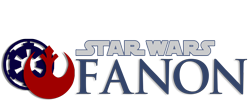This is a planet just a few light-years away from Earth.
Geography and Climate[]
The planet has 4 continents and 3 oceans. 2 of its continents touch its equator.
The climate of this planet is rather humid, so in colder areas, there is lots of snow in the winter. Some areas of land are vastly covered in forest because of the humid climate. There are few mountain regions or open areas on this planet; with a few exceptions. The air of this planet is 25% oxygen.
Sentient Species[]
Evidence of mermaids and mermen HAVE been found. Zoologists, scientists, and sometimes tourists come here to see and study the animals, geography, oceans, plants and the planet itself.
Land Fauna[]
The land fauna includes the following:
Warning: some of the animals are from the book "Animals Real And Imagined"
Satyr[]
This ape-like primate comes from a group of primates that look like apes, but have tails and horns. This ape is an omnivore that eats eggs, fruit, honey, and insects. The horns are primarily used for balance when swinging through trees.
Goram[]
This is also a member of the strange primate family. However, the horns are used mainly as weapons during mating season. Like the Satyr, Gorams are omnivores, feeding on carrion, berries, small animals, and occasionally eggs.
Wildegelada[]
These are among one of the most blizzare animals on the planet, the wildegelada lives in herds up to 1500 or more! Mating season for these antelope-like creatures is from late May to late June. Males compete for females by slapping each other with there front legs. Females give birth to one calf around September or October. These creatures are herbivores, feeding in grass, herbs, flowers, and even leaves.
Moo Monster[]
The moo monster is a big armored herbivore that eats leaves, flowers and tall grass. Mating season is from March to early May. The males battle for females by slaming themselves with their tail clubs.
Tracker[]
Despite their scary reptillian appearance they are really, mammals. They have a extra pair of legs for grasping onto prey. These animals live in small packs of 1 male, several females and their young. They are carnivores preying on animals such as the wildegelada and moo monster.
Species of Tracker[]
- Pre-Tracker (Track primitiva) (A primitive tracker that looks more like a dog)
- Eastern Tracker (Track orientalem)
- Western Tracker (Track tracker)
Dog Bear[]
These are giant bear-like creatures that have the behavior and body of a bear, and the head of a wolf (sort of). Like bears, they are omnivores, feeding on fruit, carrion, fish, and sometimes hunting live prey, such as the wildegelada.
Bullbeast[]
These are animals that share a similar niche to the wildebeast of the african savannah. They are a favorite to trackers and dog bears.
Mega Tortiose[]
These are giant tortioses that can stand as high as a man. They still retain their shell as a defense against predators. They can live up to 200 years!
Coast Hopper[]
These kangaroo-like amphibians do lay their eggs in the water, but as an adult, they usually have the resistant hide of an aquatic mammal, like a seal does. They have a complex social system to ensure the survival of the famales young. The groups they live in contain some large adult males, which lead the group about a dozen females, and their young. To avoid predatoration, the tadpoles mature quickly. They live in the warm swamp coasts of Imparem. They can live up to 30 years in the wild. A group of coast hoppers is called a leap.
Chimunkeroo[]
These kangaroo-like marsupials are very similar to the chimby from "Rescreatu". However, they are much larger, about the size of a red kangaroo. They are herbivores, eating ferns, grass, fruit and flowers. There are many different species that can be told appart by color. Albinos have been found.
South Polar Horse[]
The south polar horse is a horned equine especillaly adapted to surviving in the far southern half of the southwestern continent. The have a thick layer of fur to avoid freezing. The eat tundra grasses, mosses, and flowers.
Occisor[]
Latin for killer, these giant lizard-like creatures are related to crocodiles, and like them, they are carnivores. These are natives to the centeral continent, where there's dry and arid savannah.
False Leopard[]
This predator of the centeral continent atcually belong to a group of carnivorans that are now extinct on Earth called nimravids. These cat-like creatures have a lifestyle like that of a leopard.
Ocean Fauna[]
The ocean fauna includes the following.
Mermen & Mermaids[]
There have been sightings of these aquatic, possiblly sapient apes off the coasts. They probably have a sim,ilar lifespan to that of humans
Herminites[]
These are shelled celphapods that are related to the extinct amonites. The are harmless to humans and have been known to be quite friendly torwads them.
